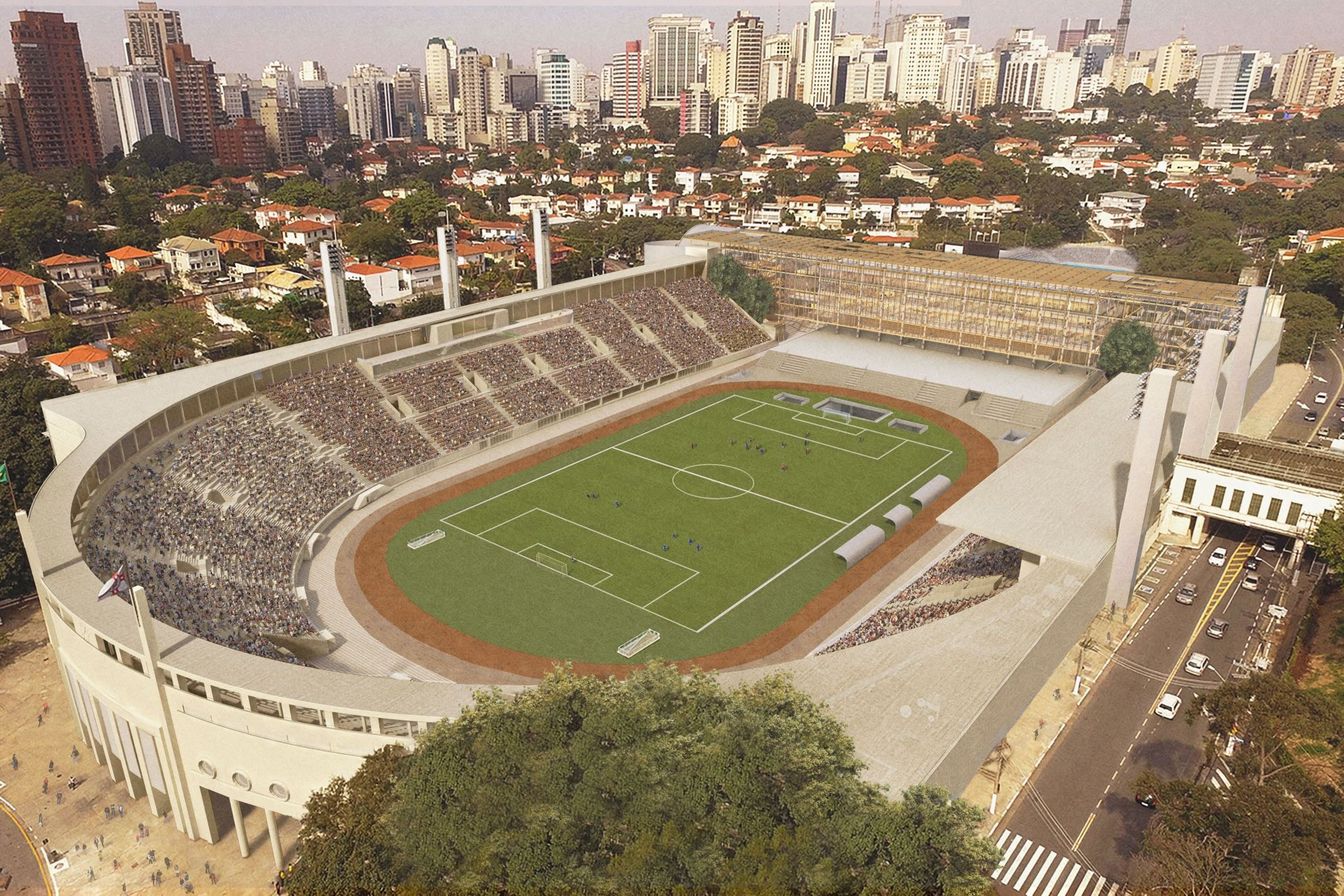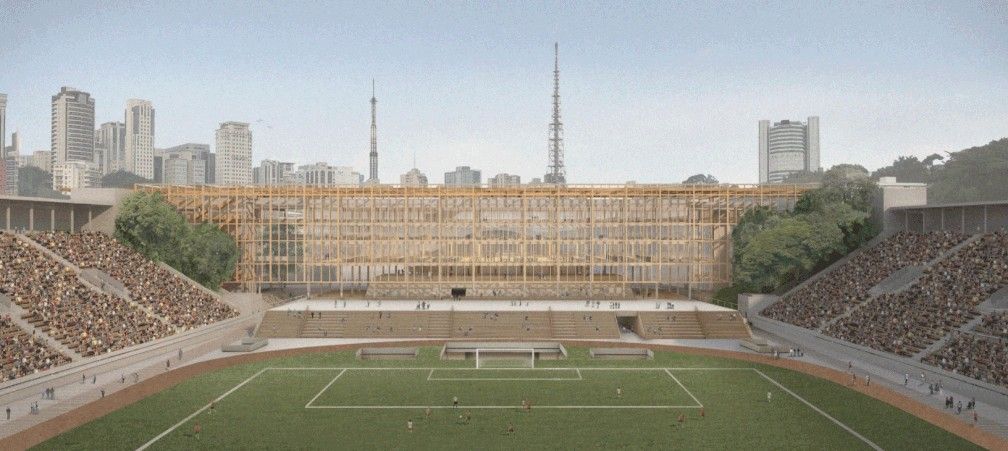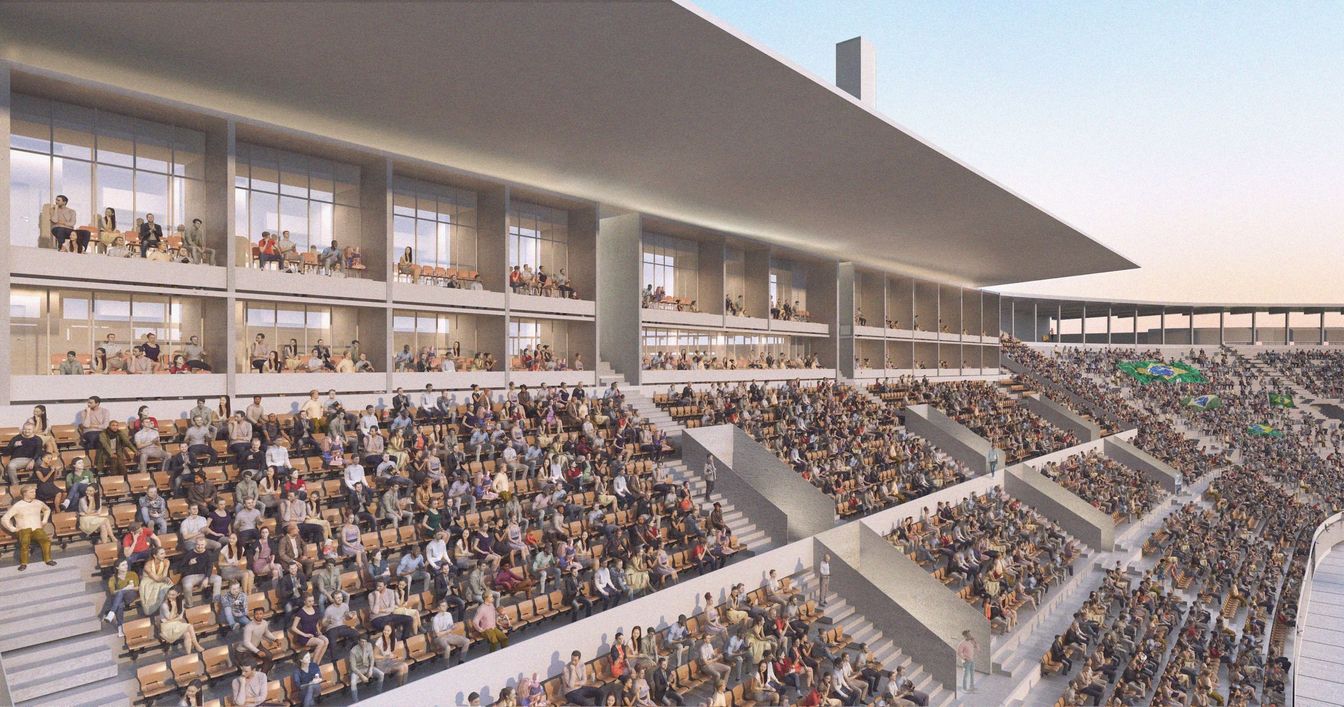New design: Legendary Pacaembu changes its face
source: StadiumDB.com [TS]; author: michał
 One of the most important stadiums in Brazil is undergoing redevelopment. For a long time it was the second home for São Paulo state's Big Four. "Seleção" also played dozens of games here.
One of the most important stadiums in Brazil is undergoing redevelopment. For a long time it was the second home for São Paulo state's Big Four. "Seleção" also played dozens of games here.
Advertisement
Stadium capacity goes down
Estádio Municipal Paulo Machado de Carvalho, also known as Estádio do Pacaembu, has been in existence since 1940. Over time, it has gone through a number of modernisation works. Thanks to them, it retained its functionality and was widely used by the national side and local clubs over the years.
Corinthians, Palmeiras, São Paulo and Santos were frequent hosts here when their venues were renovated or rented out for concerts. At the moment, of the Big Four, Santos is most interested in playing some of their home matches at the modernised stadium and has already taken initial steps towards it.
For many years, the arena was managed by the municipality. It was only in January 2020 that a private entity (Allegra Pacaembu), which received a concession for 35 years, began to take care of the stadium. The consequence of this change was the decision to undertake works related to the revamp of the facility. A design by Sol Camacho from Escritório Raddar studio was introduced.
Approval for the modernisation was given by the authorities dealing with protection of cultural heritage (Condephaat and Conpresp), because Pacaembu is a landmarked building.
The works were tried to be torpedoed by Viva Pacaembu, an association which protested against the demolition of the south stand, arguing that its pulling down would threaten the structure of the entire stadium. The municipal authorities did not take this request into account (after a court ruling that the south end is not heritage-protected) and gave the green light to start construction.
Work was expected to begin as early as mid-2020, but the coronavirus pandemic delayed it by a year. For the amount of R$ 400 million (€ 65.8 million), the ground is to receive a new look and significantly improve its facilities. The most important of all changes will be the capacity reduction to 26,000, roughly 12,000 less than today. Completion of construction is scheduled for October 2023.
Famous Tobogã already (partly) gone
Revamp of the Pacaembu sports complex, the most important element of which is the stadium, began on June 29, 2021 with demolition of rectangular south stand (Tobogã). The tribune was erected in 1970 (which is why its demolition was allowed) when it was added to existing horseshoe-shaped structure. Its pulling down is to take 3-4 months. Because of the dense residential neighbourhood around, implosion wasn’t an option. Piece by piece, the structure will be taken apart.
In the place of the south stand, a multifunctional building will be created, with five above-ground and four underground storeys. Its total floor area is planned at 44,000 square metres. The building is to house a congress and event centre for 2,000 people and an underground car park with 550 spaces.
The ground floor is to feature interconnected areas such as an outdoor space overlooking the pitch, an interior square with restaurants, cafes and service facilities. In addition, there will be a sports centre and the world's largest esports arena built into the east stand, specialising in the Battle Royale genre with seats for 2,000 fans and 100 players. All this is to be done in the first phase of the investment.
Next stage of modernization is focused on the renovation of eastern and western stands (along the playing field). The aim of work is to expand back-up facilities with new usable areas, toilets and catering facilities. The football museum will remain there in its present shape.
Historic art deco façade of the venue will be restored, and the northern sections of the stadium's horseshoe arch (green and yellow) are to be refreshed but retain their original appearance. Press zones and a gymnasium with a characteristic roof in the form of wooden arches will be revamped. 25 VIP lounges are to be available, nearly all within the west side.
Author: Tomasz Sobura
Advertisement
 StadiumDB
StadiumDB ©
©  ©
©  ©
©